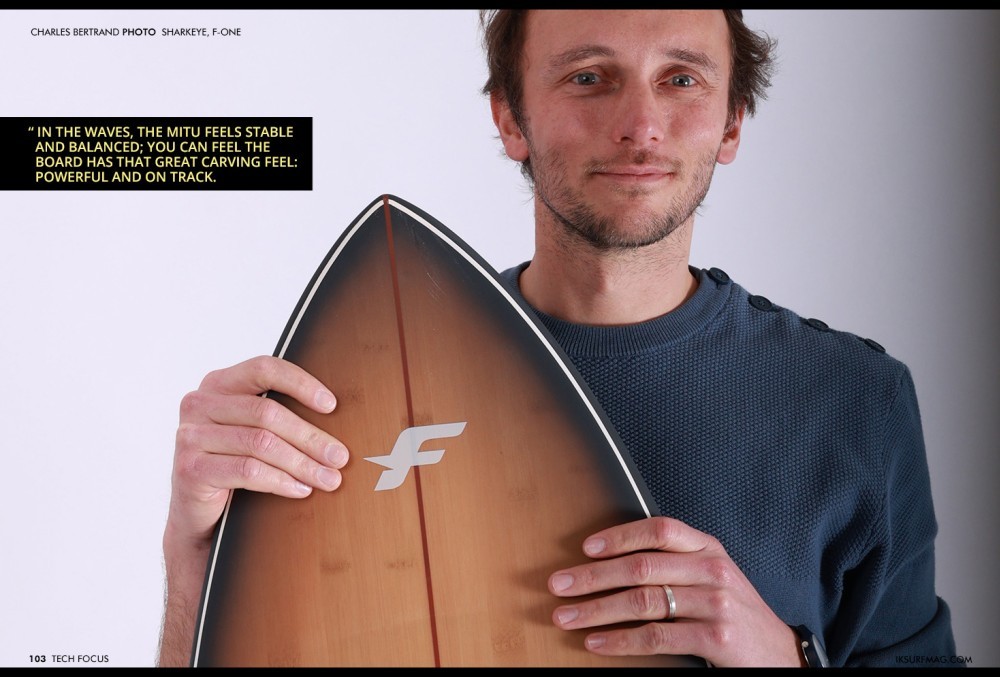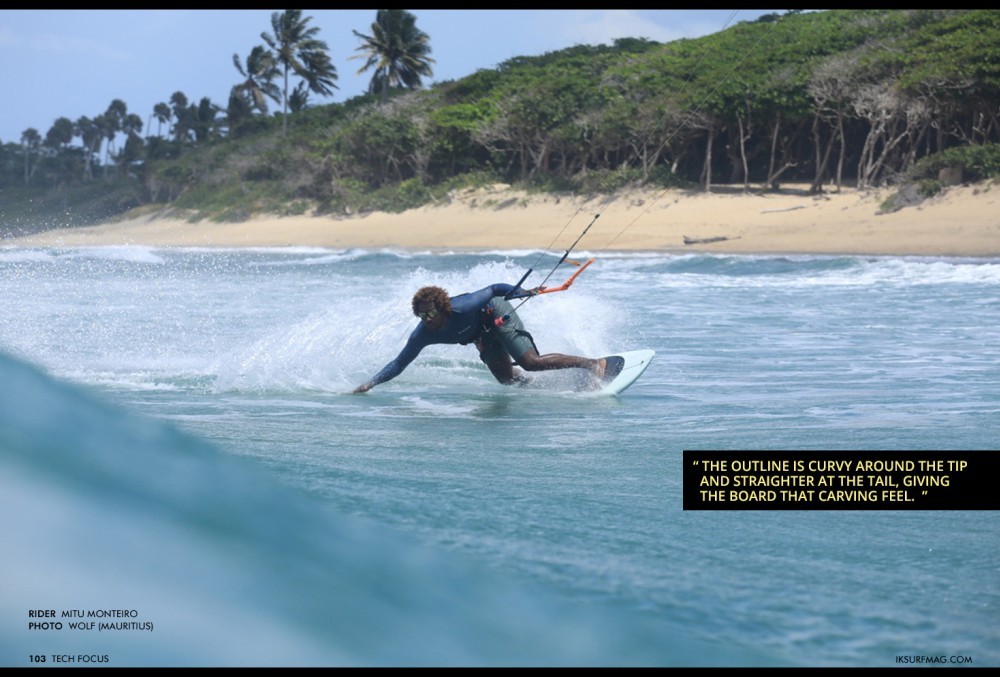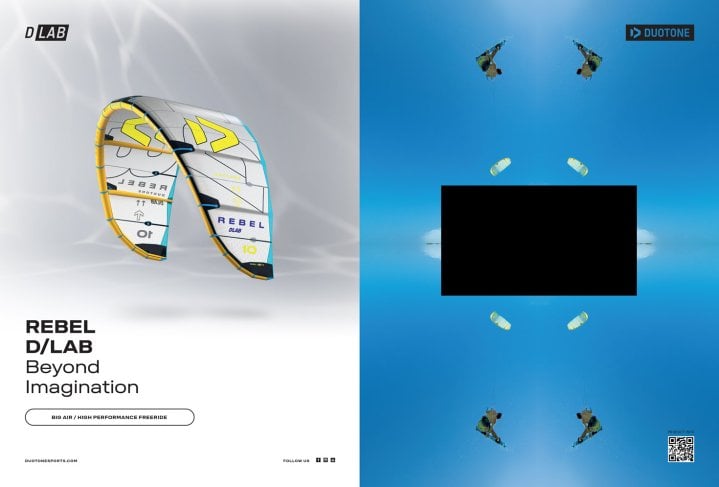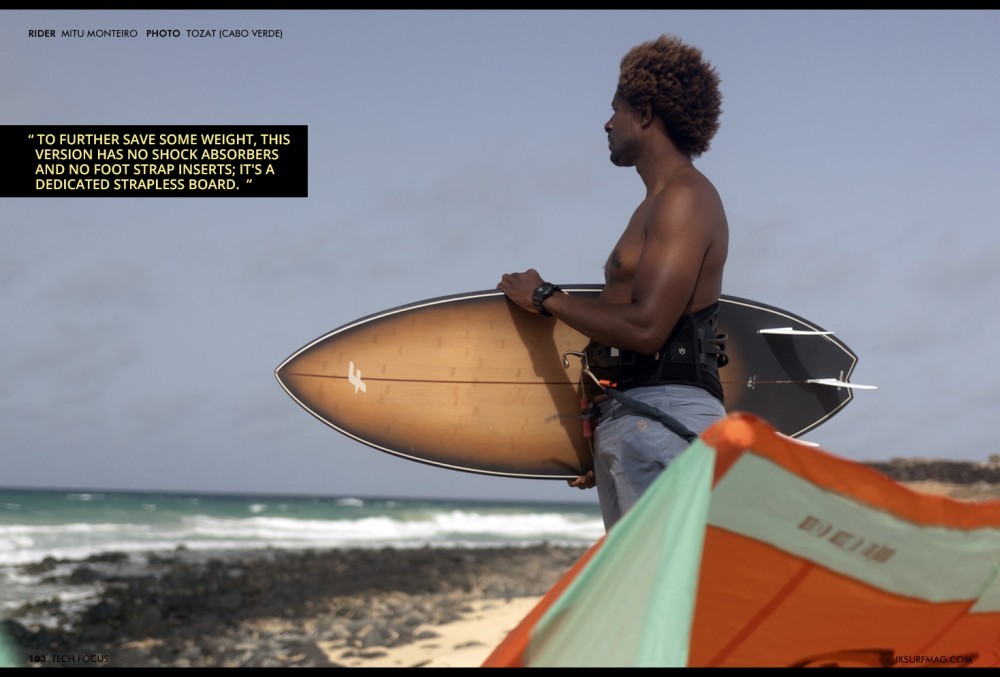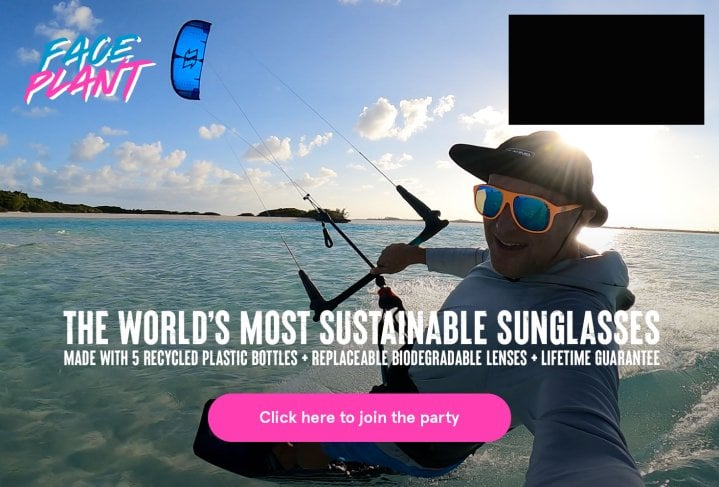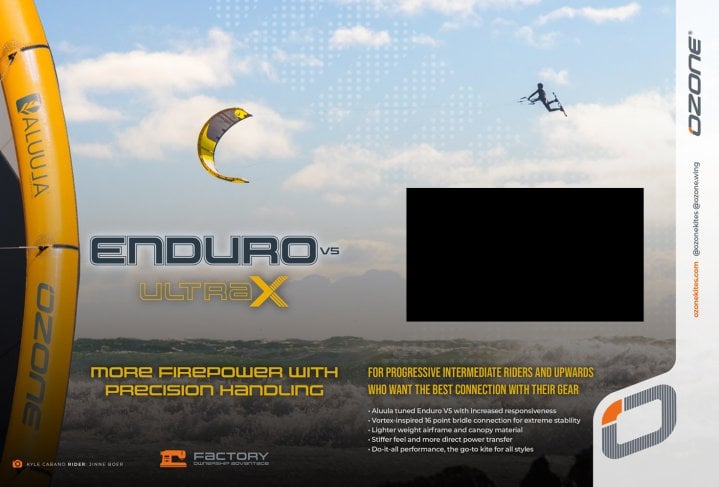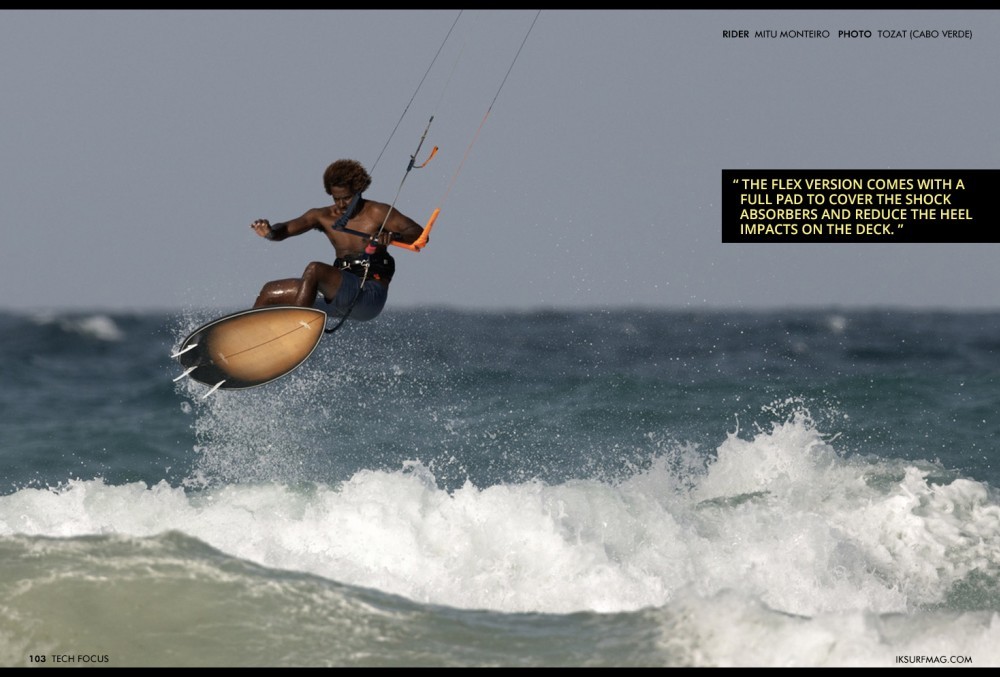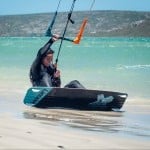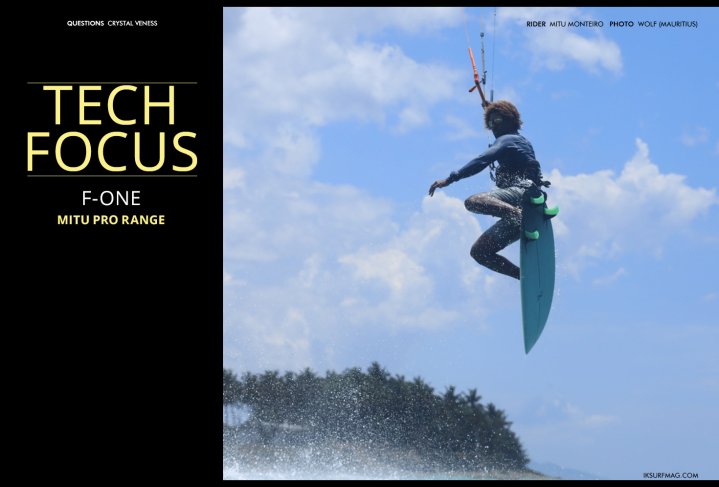
Tech Focus: F-ONE Mitu Pro Range
Issue 103 / Mon 19th Feb, 2024
The Mitu Pro is one of the most loved surfboards in the F-ONE range, with a reactive outline that promises fun in any conditions. With three versions available, we caught up with the board and foil designer at F-ONE, Charles Bertrand, to find out how the different construction methods impact the design.
First, a question about the shape! What makes this outline so fun to free ride but also so effective when it comes to wave riding and strapless freestyle?
Well, all the shape aspects are working towards that, but the DNA of the board lies in its fast rocker line with a deep single concave combined with a compact outline with curvy lines running towards the tail.
The Mitu Pro is legend Mitu Monteiro's signature shape. How did the design team work with Mitu to create this shape? What performance attributes was Mitu hoping to achieve in this board?
It's a long story now. Mitu really was the driving force behind the initial development of the board. In that period, he tested a lot of different shapes to finally drive the design towards the 1st production shape that was launched in 2015. Since then, the shape has evolved using his input (competing on the world tour), with added feedback coming from Micka Fernandez (Raphael Salles' wingman for testing) and from our customers as well. Mitu wants a board that he can use both in freestyle and waves, so we need fast acceleration, and good pop with perfect control and good turning in the waves. In the waves, the Mitu feels stable and balanced; you can feel the board has that great carving feel: powerful and on track.
The newer, dedicated freestyle boards, such as the Magnet, have pushed the envelope of the Mitu shape progressively more towards wave riding over the years, but it's still doing great at freestyle.
The Shadow board appears to have a similar shape but with a rounded tail instead of a swallow tail. How does this tail shape affect the performance of the board? Are there other major differences in the two shapes, and what are they?
The rocker lines have converged a bit over the years: The Shadow has become a bit faster and the Mitu a bit more wave oriented. Yet these two boards are two different characters: The Mitu has more planing and upwind abilities, and its width, together with the swallow tail, makes it more stable, and it has a bit more volume. The outline is curvy around the tip and straighter at the tail, giving the board that carving feel. That swallow tail also gives it more grip for popping on the flat or edging in the waves. The Shadow is more focused on rail-to-rail transitions with its round pin tail. Its outline is a little straighter between the feet but round at the tail, making it very easy and intuitive to drive the board from one turn to the other.
The Mitu Pro comes in three different constructions: the Carbon, the Bamboo, and the Flex. What are the main differences between these three constructions?
The Bamboo Construction is a timeless standard. It's proven, it's durable, and it uses natural fibres to strengthen the glass/epoxy laminate: two bamboo layers on the deck and one on the bottom.
The Pro Flex is a more elaborate construction that uses high-density foam in the laminate to maintain the strength of the board and bring a bit of flex for a more intuitive and comfortable ride. The Pro Flex also includes some foam shock absorbers under the pad in the front foot area for extra comfort.
The Carbon construction is another level with carbon fibre used in the laminate to achieve a lighter board with a fantastic strength-to-weight ratio. To further save some weight, this version has no shock absorbers and no foot strap inserts; it's a dedicated strapless board.
Carbon is often seen as the most high-performance material. Is this the case when it comes to surfboard performance?
Yes, that remains true when strength and durability are a design target. You can make a light board without carbon fibre, but it won't be as strong. Carbon is unbeaten when looking at the strength-to-weight ratio. These freestyle boards are submitted to high loads and impacts; durability is paramount, and we need to keep the weight down.
While the carbon offers more durability for strapless freestyle and lightness for rotations, are there downsides to the carbon? Is the board extra stiff and less flexible for a more general wave rider?
Carbon is stronger, but it's also stiffer, so it's true that the board feels stiffer than a glass fibre board. We've worked on the laminate to moderate this feeling, and the upside of it is the extra reactivity you get from the carbon construction; the board feels sharper and lively under your feet.
For kiters focused on having fun in the waves, the Bamboo or Flex may be the better construction option. What are the first noticeable differences when comparing how these boards feel on the water? What should a kiter consider when choosing one board over the other?
The Bamboo construction offers a direct feel and great durability and has an edge in the pricing. The Flex version clearly has more comfort and can probably be pushed harder as a consequence. It's got a nice feel with extra options, such as the carbon fins, the shock absorbers, and the full pad.
The Flex and Carbon versions of the Mitu Pro are shipped with a full deck pad, while the Bamboo comes with a tail pad only. Is the Bamboo intended to be used with wax?
With the Bamboo boards, riders can choose whether they want to ride with wax or with a pad, depending on their personal preferences. The Flex version comes with a full pad to cover the shock absorbers and reduce the heel impacts on the deck.
Another difference in the accessories is in the fins. The Flex and Carbon come with F-ONE Flow Carbon fins, while the Bamboo comes with Future F4 fins. What is the reason for this? What about these fins help the board ride at its maximum performance?
It's important to have a range with a variety of price offers. With our three levels of pricing available in the range, we took the opportunity to complement the construction specs with some options and features that enhance the performance or the feeling on the water. The Future F4 fins are a great standard, and the carbon F-ONE Flow fins have been specifically designed, tested and engineered for kiting. Their outline, profile and flex have been refined to provide extra speed, perfect grip and great balance.
Videos
By Crystal Veness
Editor at IKSURFMAG, Crystal Veness hails from Canada but is based in South Africa. When she isn't busy kitesurfing or reporting on the latest industry news for the mag, she is kicking back somewhere at a windy kite beach or working on creative media projects.




